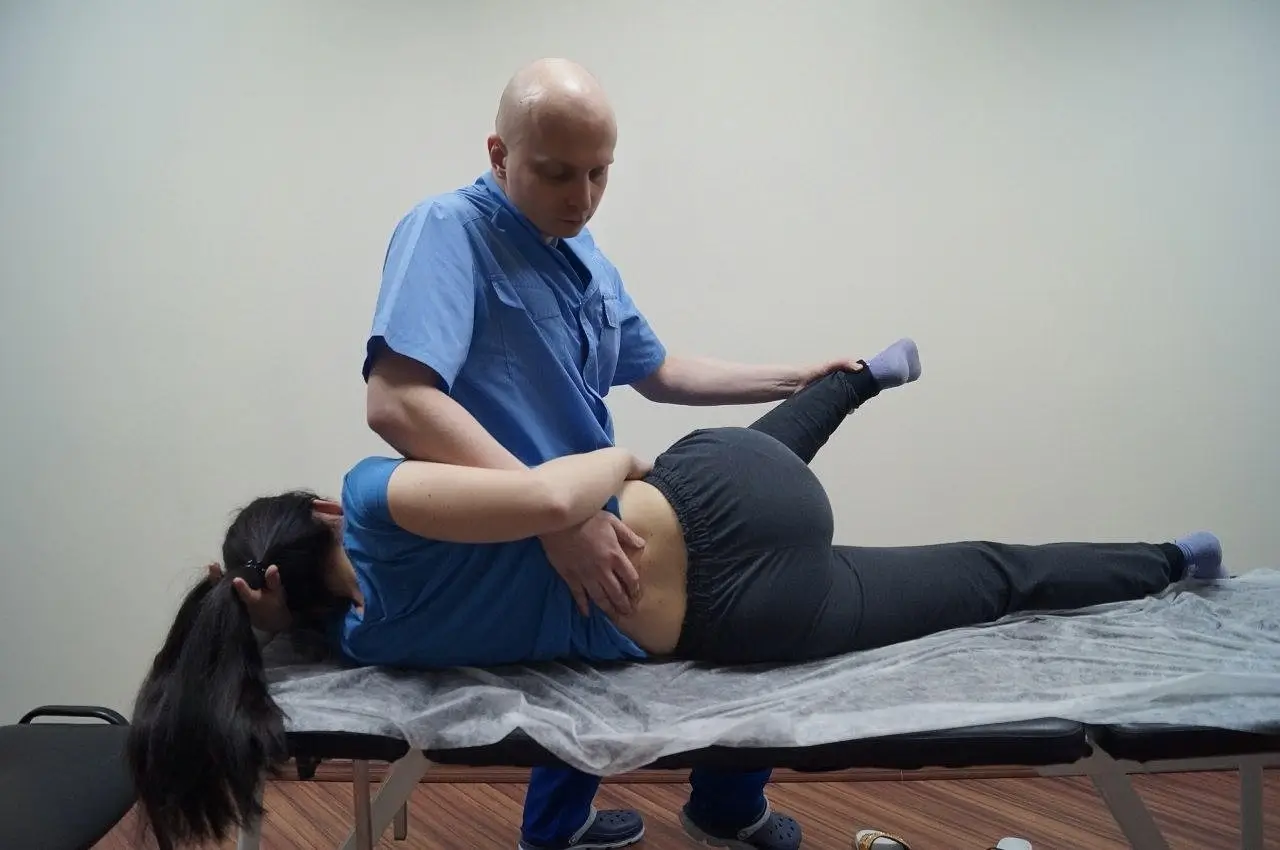

Visceral manipulation techniques
VISCERAL OSTEOPATHY
Visceral manipulation techniques help to correct functional and structural imbalances throughout the body, including dysfunctions of the musculoskeletal, vascular, nervous, urogenital, respiratory, digestive and lymphatic systems. It examines and treats the dynamics of organ mobility and connectivity, membranes, fascia, and ligaments. Through visceral osteopathy, proprioceptive connections in the body are improved, which helps to activate the person and relieve symptoms of pain, dysfunction and bad posture.
Osteopathic visceral manipulation - part of a holistic approach
 Integrative approach to examining and treating the patient requires assessment of the structural connections between the internal organs, and their fascial and ligamentous connections to the musculoskeletal system. Deformities in the connective tissue of the internal organs can result from surgical scars, adhesions, disease, posture or trauma. Patterns of tension through the fascial network deep within the body, create a cascade of effects far from their sources that the body will have to compensate for. This creates fixed, abnormal points of tension around which the body must move, and this chronic irritation is in turn replaced by functional and structural problems.
Integrative approach to examining and treating the patient requires assessment of the structural connections between the internal organs, and their fascial and ligamentous connections to the musculoskeletal system. Deformities in the connective tissue of the internal organs can result from surgical scars, adhesions, disease, posture or trauma. Patterns of tension through the fascial network deep within the body, create a cascade of effects far from their sources that the body will have to compensate for. This creates fixed, abnormal points of tension around which the body must move, and this chronic irritation is in turn replaced by functional and structural problems.
Imagine adhesion around the lungs. It would create a modified axis of motion that would require abnormal placement of nearby body structures. For example, an adhesion could alter the movement of a rib, which could then create unbalanced loads on the vertebra to which it is attached and, over time, possibly cause dysfunctional relationships with other structures. This scenario shows just one of hundreds of possible outcomes of a small dysfunction - amplified by thousands of repetitions each day.
 There are certain connections between somatic structures such as muscles and joints, the sympathetic nervous system, internal organs, the spinal cord and the brain. For example, the sinuvertebral nerves (Luschka's nerves) innervate the intervertebral discs and have direct connections to the sympathetic nervous system, which innervates the internal organs. Both the sinuvertebral nerves and the sympathetic nervous system are connected to the spinal cord, which has connections to the brain. Thus a person with chronic pain may have irritation not only in the musculoskeletal system (including joints, muscles, fascia and discs), but also the internal organs and their connective tissue (including the liver, stomach, gallbladder, intestines and adrenal glands), the peripheral nervous system, the sympathetic nervous system and even the spinal cord and brain.
There are certain connections between somatic structures such as muscles and joints, the sympathetic nervous system, internal organs, the spinal cord and the brain. For example, the sinuvertebral nerves (Luschka's nerves) innervate the intervertebral discs and have direct connections to the sympathetic nervous system, which innervates the internal organs. Both the sinuvertebral nerves and the sympathetic nervous system are connected to the spinal cord, which has connections to the brain. Thus a person with chronic pain may have irritation not only in the musculoskeletal system (including joints, muscles, fascia and discs), but also the internal organs and their connective tissue (including the liver, stomach, gallbladder, intestines and adrenal glands), the peripheral nervous system, the sympathetic nervous system and even the spinal cord and brain.
Some visceral manipulation benefits:
- Improvement of internal organ function. Restoring normal mobility promotes optimal functioning of internal organs. By removing restrictions or adhesions in the visceral system, a visceral osteopath helps improve circulation, digestion, respiration, and other organ functions.
- Improving musculoskeletal balance. Because, organs are interconnected to the musculoskeletal system through ligaments, fascia and other connective tissues, working with them can often restore balance and correct dysfunction in the spine, joints and muscles.
- Pain reduction. Visceral manipulation can help people experiencing chronic pain associated with dysfunction of related organs.
- Improving posture. Restrictions or imbalances in the abdominal or thoracic cavity can directly affect posture, gait, and overall, efficiency and ease of movement.
- Improved overall health. By influencing the digestive, respiratory and even endocrine systems, the osteopath contributes to the normalization of the general physical and emotional state.
- Prevention of serious diseases. By eliminating reversible disorders of mobility, blood circulation and innervation of organs, we thereby prevent the development of irreversible changes in them over time.
Visceral osteopathic techniques are based on precise and gentle manual manipulation, with the aim of stimulating normal mobility, tone and motility of internal organs and their connective tissue. These gentle manipulations can potentially improve the functioning of individual organs, organ systems and the structural integrity of the entire body. Due to the delicate and often highly irritable nature of internal organs, gentle precisely directed force produces the best results. As with other osteopathic techniques that affect the body in a profound way, visceral manipulation is used only to assist the internal forces of the body. Because of this, trained practitioners can be assured of beneficial effects on the body instead of adding new damage and disorganization.
☛ Neuromuscular trigger point therapy.
☛ Schultz Autogenic Training.




